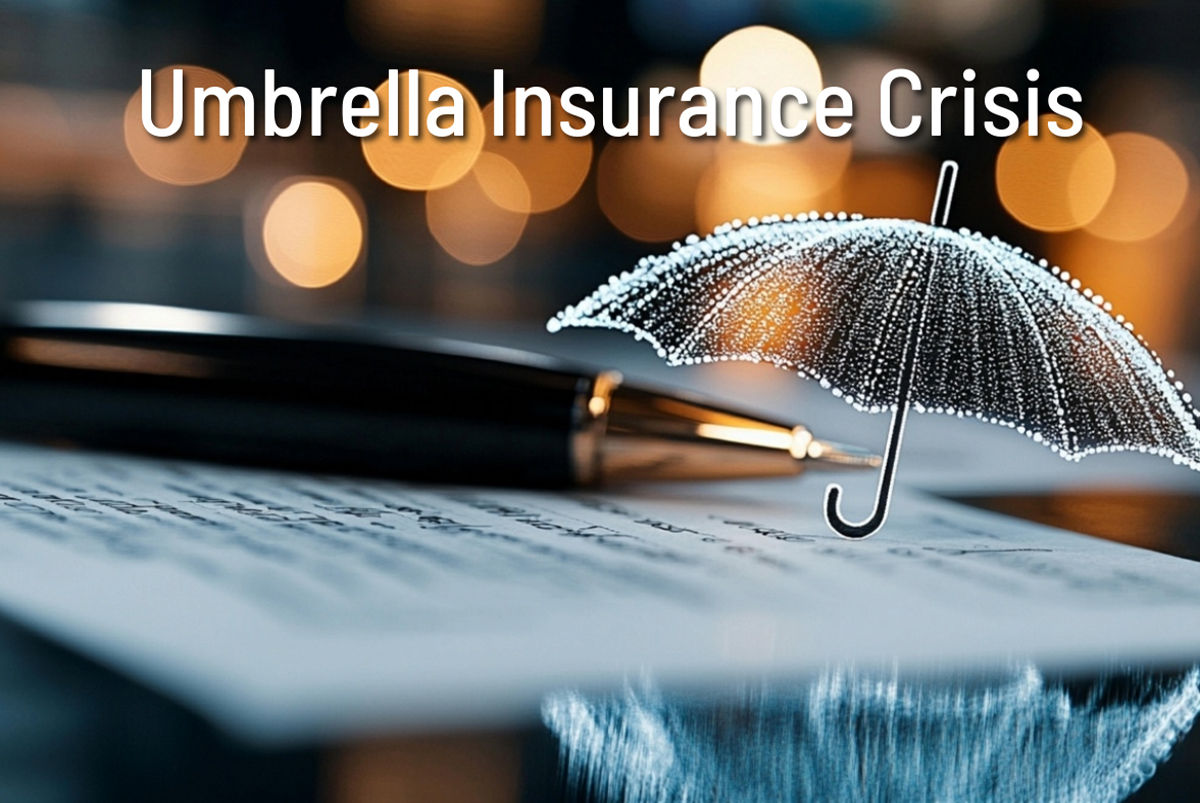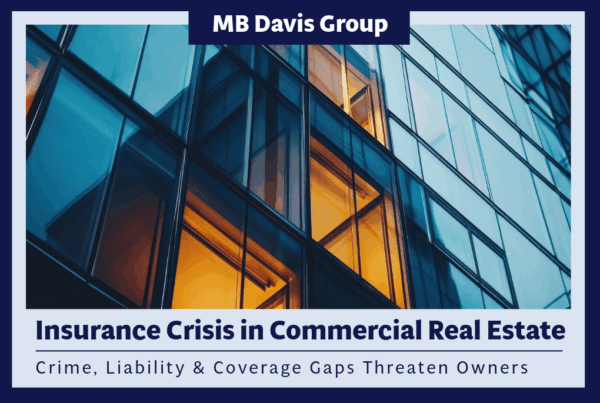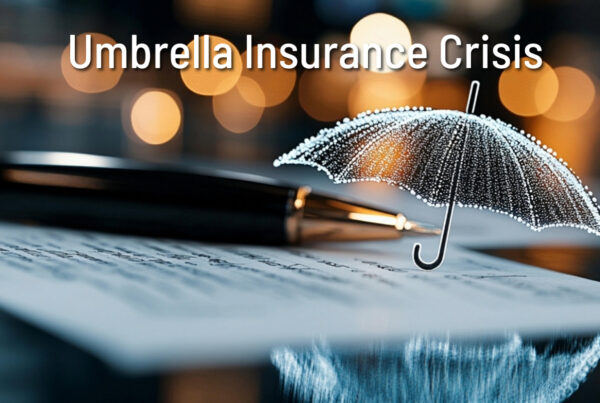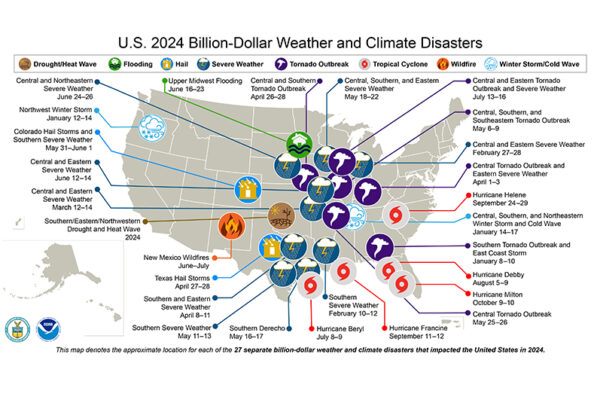No Industry Is Exempt from the Ongoing Umbrella Insurance Crisis
It doesn’t matter if you’re operating in commercial real estate. Or oil and gas. Or construction. The ongoing umbrella insurance crisis affects industries across the board. If you’re using umbrella insurance, these industry shifts are going to affect you and your commercial insurance planning. Here’s why it’s happening and how you can protect yourself.

What Is Umbrella Insurance?
Umbrella insurance is a policy that offers extra liability over and above the limits of your existing insurance.
It’s particularly common for people who:
- Are more likely to be sued (landlords, for example)
- Are high-net-worth individuals
- Possess significant assets
“Frequency of Severity”: Why the Insurance Industry Is Struggling with Umbrella Policies
The entire insurance industry has been struggling with umbrella policies for one core reason. Things that used to be routine claims are now consistently more costly and intense. The “frequency of severity” has dramatically increased.
Think about a standard auto accident. Say it results in one victim being hospitalized and needing long-term medical care. Today, that’s frequently a million-dollar claim—and this has nothing to do with anyone making false or exorbitant claims or taking advantage of the system.
Several factors affect the cost and severity of that claim:
- Loss of work expenses. Thirty years ago, average US household wages were $34,076 per year. In 2024, that average household income is now $61,984. Covering those lost wages is simply more costly than it used to be.
- Improvements in the medical field. Medical advancements are moving fast. Injuries that might have been fatal even a few decades ago are now treatable.
- Take the tragic case of Patrick Bouvier Kennedy. He was the infant son of President John F. Kennedy and First Lady Jacqueline Kennedy. He was born August 7, 1963, and died just thirty-nine hours later from complications of Hyaline Membrane Disease (HMD).
- Not twenty years later, medicine had improved to the point that treatments for HMD pushed the mortality rates for affected infants to less than 10%.
- Similarly, Calvin Coolidge’s son died from sepsis, which resulted from a blister he developed playing tennis. Today, this would be entirely treatable and avoidable.
- Those procedures and advancements are incredible, but they’re also expensive.
What This Means for Umbrella Insurance
What are the practical implications of this on your insurance program?
- Expect your premiums to rise.
- In reaction to this new reality, the first $5 million in umbrella insurance has become very expensive. This phenomenon is industry agnostic. Everyone is affected.
- However, those working in industries that require large fleets of trucks are particularly affected. (This includes the oil and gas industry.) Large company vehicles are the most common vector for those seven-figure or higher claims.
- When you think about it, that makes sense. Getting into your car is routinely the most dangerous thing you do every day. When employees drive hundreds of miles per day from site to site, it consistently puts them in a perilous position.
- Taking one sip of coffee or checking your phone at just the wrong time could result in a catastrophic event. If a person was killed or injured as a result of that employee’s driving, the company could quickly have a $10 million loss on their hands.
- Expect umbrella insurance companies to offer you less insurance coverage.
- Because insurance companies don’t want to cover these massive claims anymore, you’ll likely feel another major consequence come renewal time.
- Many people are seeing their umbrella limits cut in half but their premiums holding steady. If you paid $50,000 for $10 million of insurance before, expect to still pay $50,000 in premiums but only for $5 million of insurance.
- Even though these umbrella insurance companies cut the limits, you still want to maintain or increase the amount of insurance you have. That often means getting multiple carriers to stack their limits, which adds significantly to your insurance-related costs.
- “I actually recommend all my clients get beyond ten million in insurance. In our office, our rule of thumb is that one fatality costs $10 million, and it’s extremely easy to envision accidents or claims with multiple fatalities,” said Mitch Davis, senior consultant at MB Davis Group. “In this insurance landscape, ten just isn’t enough anymore. And with the changes to umbrella insurance, it’s costlier and more difficult to get there than ever.”
- Know if you’re in a “bad jurisdiction,” and plan accordingly.
- This umbrella insurance crisis has been happening for years and continues to manifest across industries and locations. There are, however, some notably “bad” jurisdictions, meaning rulings tends to be very plaintiff friendly in those locations.
- A few examples:
- New York City
- Georgia
- California
- Louisiana
- South Texas (around the Rio Grande Valley)
- If you operate in those areas, be aware your commercial insurance program should be robust enough to account for that higher risk.
What You Don’t Know (about Insurance) Can Hurt You
When it comes to your commercial insurance, you never want to be reactive. (The worst time to learn anything about commercial insurance is after it affects you.) For the best chance at financial planning and protection, you want to create a strategic, proactive insurance plan.
That’s where a commercial insurance consultant steps in.
They offer the broad industry knowledge that ensures you’re accounting for these variables and minimizing your chance of unpleasant financial surprises.
Have questions or concerns? Contact our Austin-based office today to learn more.
Read More - Commercial Insurance Strategies and Risk Management
 How This Difficult Insurance Landscape Puts Commercial Real Estate Owners at Risk
How This Difficult Insurance Landscape Puts Commercial Real Estate Owners at Risk
How This Difficult Insurance Landscape Puts Commercial Real Estate Owners at Risk



Looming Insurance Threat for Commercial Real Estate Owners



Umbrella Insurance Is in Crisis. Here’s Why.




